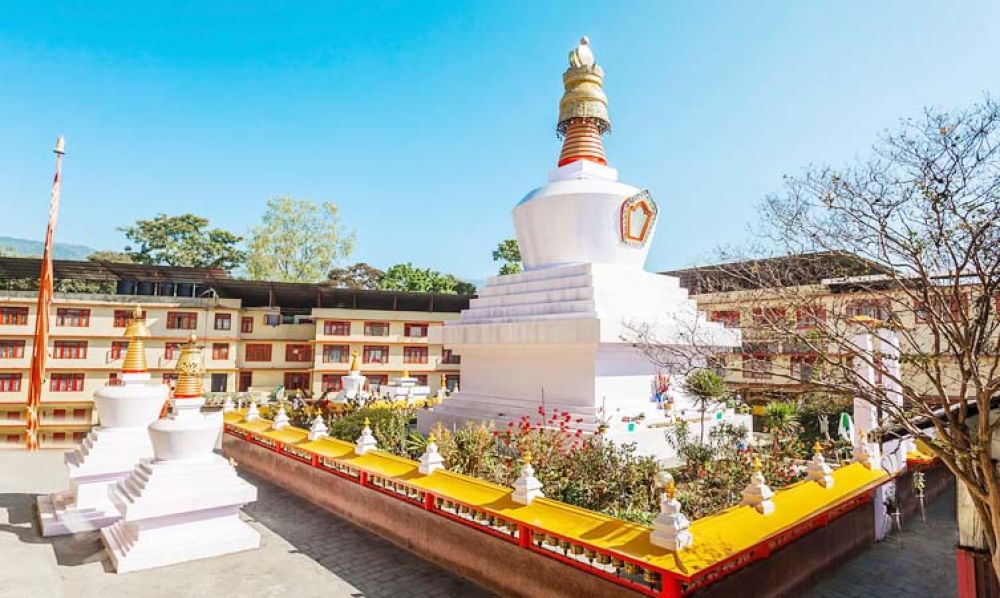

Nestled in the heart of Gangtok, the capital of Sikkim, stands the Do Drul Chorten Stupa, which has long been a beacon of peace and spirituality. This sacred monument was built in 1945 by the venerable Trulshik Rinpoche, head of the Nyingma order of Tibetan Buddhism. The Stupa is surrounded by 108 prayer wheels which are inscribed with mantras and can be spun by the faithful to evoke blessings.
Tourism in Sikkim, including visits to religious monuments like the Do Drul Chorten, began to flourish after the state merged with India in 1975. Prior to this, Sikkim was a monarchy and less accessible to tourists. The integration with India opened up Sikkim's unique culture and natural beauty to the outside world, and the state developed its tourism infrastructure accordingly.
The Do Drul Chorten Stupa became an essential stop for those interested in Buddhist culture and spiritual heritage. The site's history, coupled with its serene surroundings, attracts countless visitors every year. The Stupa itself holds significant relics and is considered one of the most important stupas in Sikkim.
In recent years, the trend in tourism in Sikkim, and at Do Drul Chorten Stupa, has leaned towards sustainable and responsible travel. Visitors are looking for more authentic experiences that allow them to connect with local traditions and culture. This has led to a rise in homestays and community-based tourism initiatives in the region.
Additionally, there's an increase in interest for activities such as meditation and spiritual retreats at Buddhist monasteries. The Do Drul Chorten Stupa, with its tranquil environment, has become a keen spot for such reflective and meditative pursuits.
Guests to the Do Drul Chorten Stupa can delve into the intricate iconography and architecture of the stupa, learn about the Buddhist philosophy, and participate in the kora, a ritual circumambulation of the stupa. The best time to visit is during Losar, the Tibetan New Year, or during Saga Dawa, the festival celebrating the birth, enlightenment, and death of Buddha.
While the region sees a growth in tourism, there is a strong emphasis on preserving the natural and cultural integrity of the places. The government and local communities work together to manage the footfall in religious and ecological sensitive zones, thus ensuring the Do Drul Chorten Stupa remains a timeless emblem of Sikkim's heritage for generations to come.